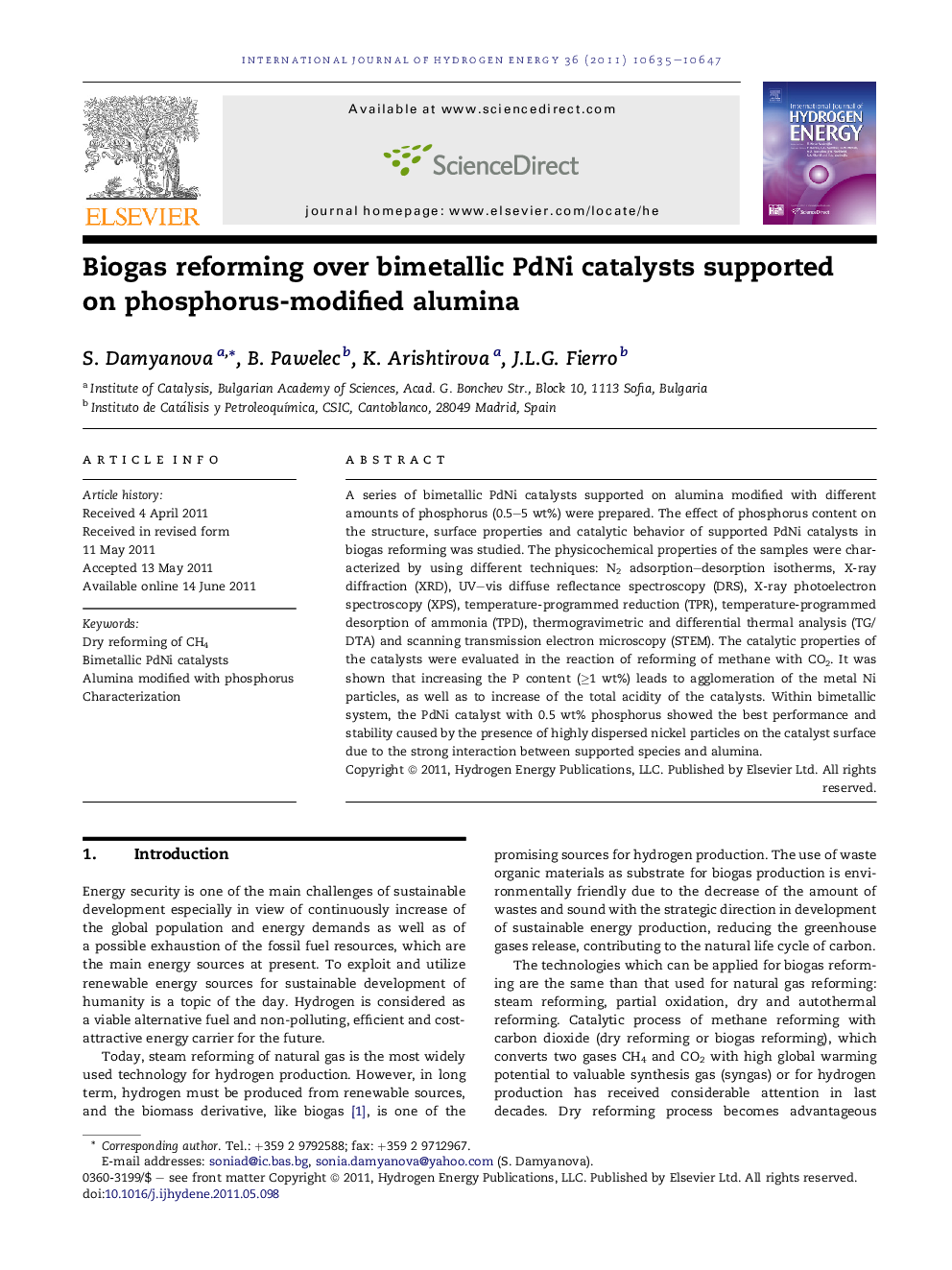| Article ID | Journal | Published Year | Pages | File Type |
|---|---|---|---|---|
| 1277531 | International Journal of Hydrogen Energy | 2011 | 13 Pages |
A series of bimetallic PdNi catalysts supported on alumina modified with different amounts of phosphorus (0.5–5 wt%) were prepared. The effect of phosphorus content on the structure, surface properties and catalytic behavior of supported PdNi catalysts in biogas reforming was studied. The physicochemical properties of the samples were characterized by using different techniques: N2 adsorption–desorption isotherms, X-ray diffraction (XRD), UV–vis diffuse reflectance spectroscopy (DRS), X-ray photoelectron spectroscopy (XPS), temperature-programmed reduction (TPR), temperature-programmed desorption of ammonia (TPD), thermogravimetric and differential thermal analysis (TG/DTA) and scanning transmission electron microscopy (STEM). The catalytic properties of the catalysts were evaluated in the reaction of reforming of methane with CO2. It was shown that increasing the P content (≥1 wt%) leads to agglomeration of the metal Ni particles, as well as to increase of the total acidity of the catalysts. Within bimetallic system, the PdNi catalyst with 0.5 wt% phosphorus showed the best performance and stability caused by the presence of highly dispersed nickel particles on the catalyst surface due to the strong interaction between supported species and alumina.
Graphical abstractFigure optionsDownload full-size imageDownload as PowerPoint slideHighlights► P content has influence on the surface and catalytic properties of PdNi/Al2O3 catalysts. ► The best catalytic performance in biogas reforming is observed at 0.5 wt% P. ► The increase of P content leads to metal agglomeration and carbon formation.
